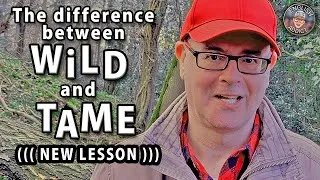વિડિઓ ચલાવવા માટે કૃપા કરીને નીચેના અંગ્રેજી સબટાઈટલ પર ડબલ-ક્લિક કરો.
New videos
આ સાઈટ તમને અંગ્રેજી શીખવા માટે ઉપયોગી એવા YouTube વિડીયોનો પરિચય કરાવશે. તમે વિશ્વભરના શ્રેષ્ઠ શિક્ષકો દ્વારા શીખવવામાં આવતા અંગ્રેજી પાઠ જોશો. ત્યાંથી વિડિયો ચલાવવા માટે દરેક વિડિયો પેજ પર પ્રદર્શિત અંગ્રેજી સબટાઈટલ પર ડબલ-ક્લિક કરો. સબટાઈટલ વિડિયો પ્લેબેક સાથે સુમેળમાં સ્ક્રોલ થાય છે. જો તમારી પાસે કોઈ ટિપ્પણીઓ અથવા વિનંતીઓ હોય, તો કૃપા કરીને આ સંપર્ક ફોર્મનો ઉપયોગ કરીને અમારો સંપર્ક કરો.







